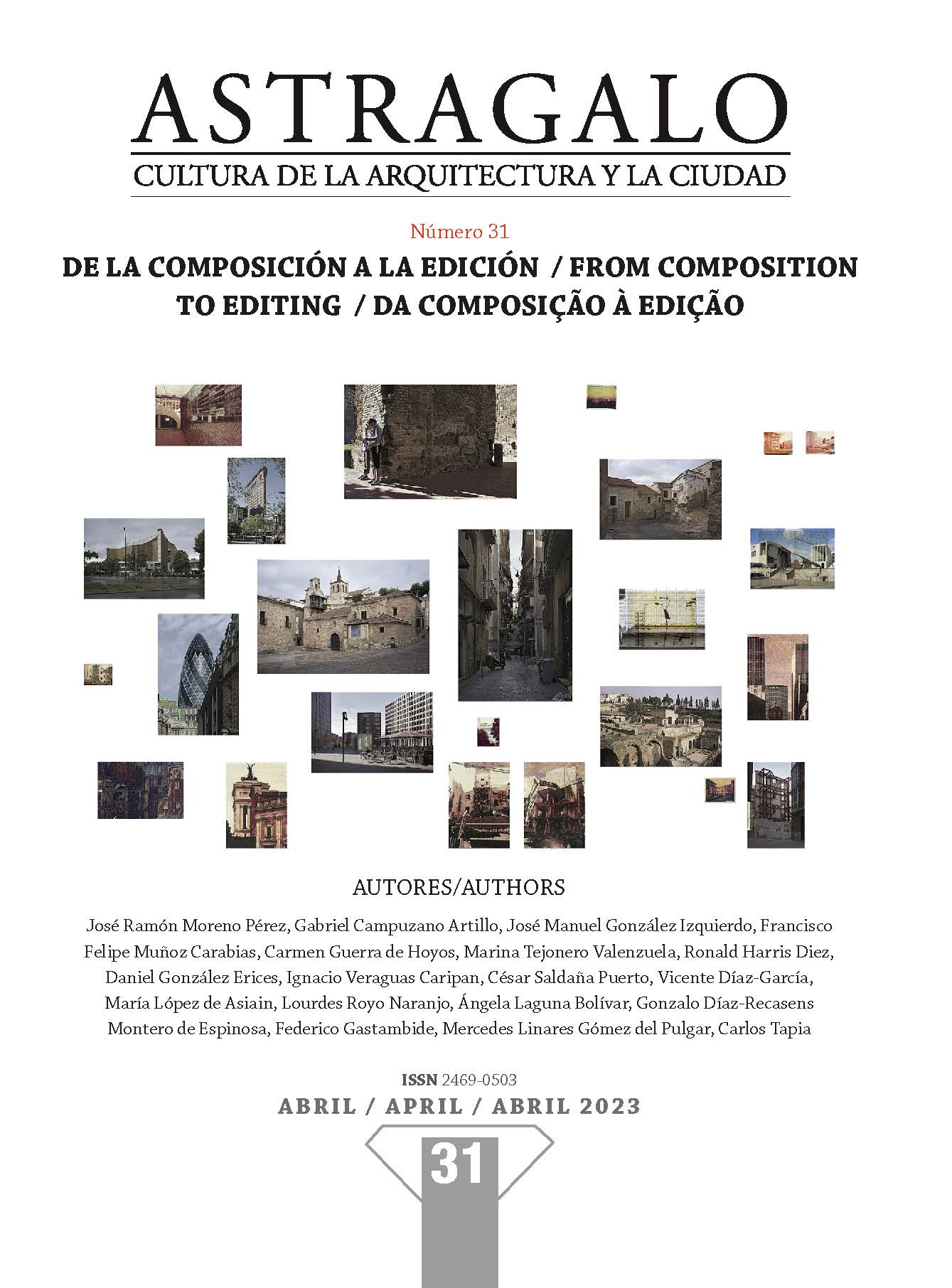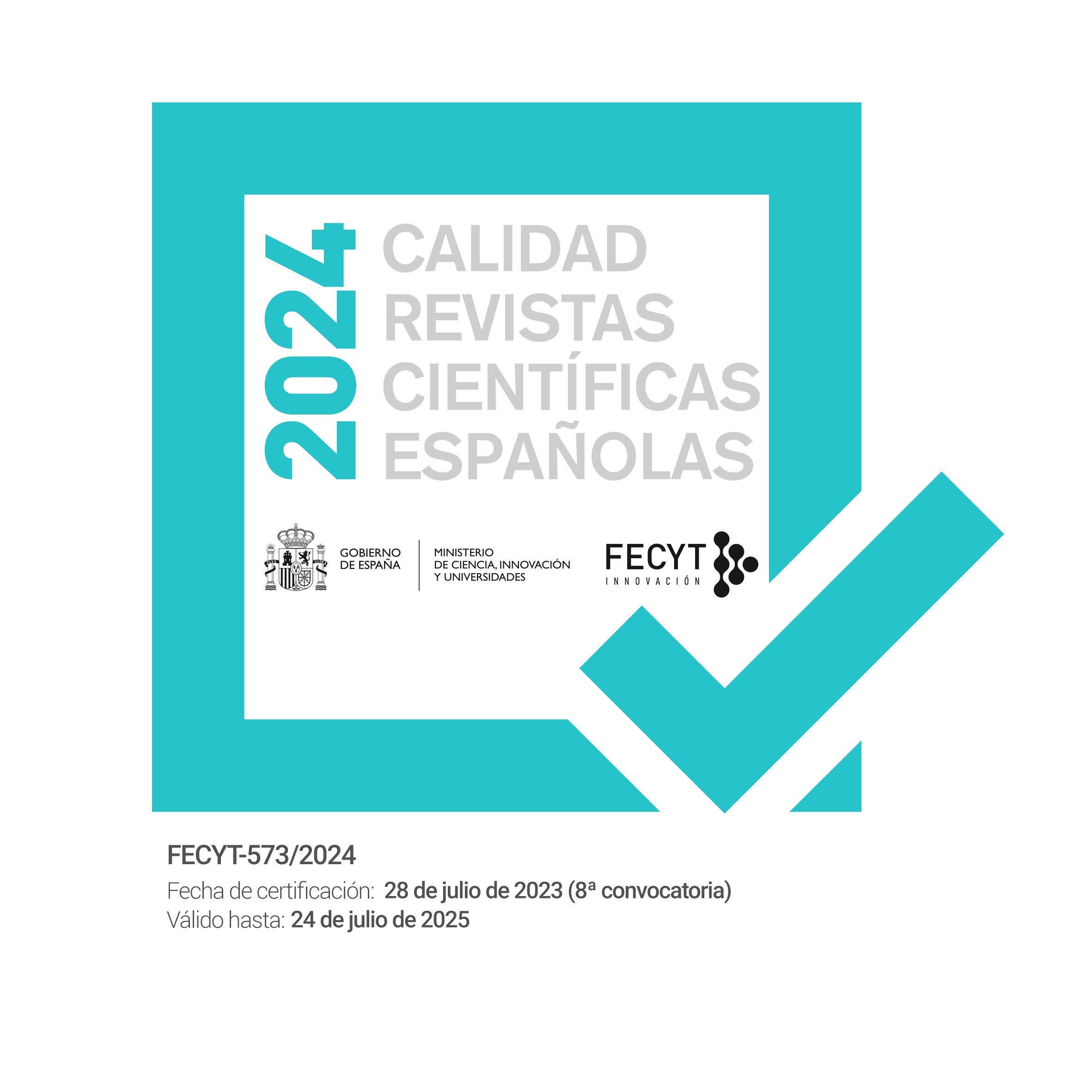Del esteticismo a la posmodernidad.
Contra la efímera modernidad sXX
DOI:
https://doi.org/10.12795/astragalo.2023.i31.08Palabras clave:
mitos de la modernidad, movimiento moderno, esteticismo y posmodernidad, romanticismo y manierismo, teoría críticaResumen
La modernidad de la estandarización y el rigor formal compartido, atacada por figuras como Walter Benjamin (1989, 185), Theodor Adorno y Max Horkheimer (1998), Herbert Marcuse (2007) o Arnold Hauser (1965), no sólo es la de la tecnocracia y la hegemonía de la razón instrumental en el caso del fascismo y el estalinismo; también fue clave para el establecimiento de otros discursos totalizadores, como en el caso del contexto institucional de Occidente, donde aún alimenta los mitos que conforman nuestra imagen global del sXX. Un siglo en el que, sin embargo, y como precisamente se propone remarcar este artículo, estuvo dominado desde sus comienzos por tendencias esteticistas y, en su conclusión, por tendencias posmodernas. La fase de superación del relativismo, y los mitos modernos portadores de la ilusión de esta superación —entre los cuales hay que destacar la imagen del movimiento moderno construida desde el discurso institucionalizado de la disciplina arquitectónica moderna—, no fueron más que un efímero tour de force que, aún hoy, retrasan y dificultan nuestra comprensión del presente.
Descargas
Citas
Adorno, Theodor W. y Horkheimer, Max. (1944) 1998. Dialéctica de la Ilustración. Fragmentos filosóficos. Trotta, Madrid.
Adorno, Theodor W., Popper, Karl, Dahrendorf, Ralf, Albert, Hans, Pilot, Harald, y Habermas, Jürgen. (1969) 1973. La disputa del positivismo en la sociología alemana. Grijalbo, Barcelona.
Anderson, Perry. (1998) 2016. Los orígenes de la posmodernidad. Akal, Madrid.
Baird, George. 1974. “Architecture and Politics: A Polemical Dispute, 1933”. Oppositions, no.4, 79-82.
Benjamin, Walter. (1937) 1989. “Historia y coleccionismo: Eduard Fuchs”. En: Discursos interrumpidos I. Trad. Jesús Aguirre. Taurus, Buenos Aires.
Benjamin, Walter. (1942) 1989. “Sobre el concepto de historia”. En: Discursos interrumpidos I. Trad. Jesús Aguirre. Taurus, Buenos Aires.
Benjamin, Walter. (1982) 2013. Obra de los pasajes [vol.1]. Abada, Madrid.
Bota, David. 2008. Notas sobre (des)función en arquitectura. Tesis doctoral. UPC.
Bourriaud, Nicolas. (2002) 2007. Postproduction. Culture As Screenplay: How Art Reprograms The World. Lukas & Sternberg, New York.
Brott, Simone. 2017. “The Le Corbusier Scandal, or, was Le Corbusier a Fascist?”. Journal of Comparative Fascist Studies, no. 6, 196-227. https://doi.org/10.1163/22116257-00602003
Caturla, María Luisa. (1944) 2021. Arte de épocas inciertas. Fundación de Amigos del Museo Nacional de Escultura. [1944]
Cusset, François. (2003) 2008. French Theory. University of Minnesota Press.
Dalí, Salvador. (1964) 2009. Diario de un genio. Tusquets, Barcelona.
De Meyer, Dirk. 2010. “Mannerism, modernity and the modernist architect, 1920–1950”. The Journal of Architecture, 15:3, 243-265, http://dx.doi.org/10.1080/13602365.2010.486565
Didi-Huberman, Georges. (1990) 2010. Ante la imagen: Pregunta formulada a los fines de una historia del arte. Cendeac, Murcia.
Didi-Huberman, Georges. (2002) 2009. La imagen superviviente. Historia del arte y tiempo de los fantasmas según Aby Warburg. Abada, Madrid.
Fisher, Mark. 2009. Capitalist Realism: Is There No Alternative? Zero Books.
Frampton, Kenneth. (1980) 2007. Historia crítica de la arquitectura moderna. Gustavo Gili, Barcelona.
Frampton, Kenneth. 1990. “Rappel à l'ordre, the case for the tectonic”. Architectural Design, v.60, n.3-4, 19-25.
Guilbaut, Serge. 1983. How New York Stole the Idea of Modern Art. Abstract Expressionism, Freedom, and the Cold War. The University of Chicago Press, Chicago, London.
Groys, Boris. (2010) 2015. Volverse público: las transformaciones del arte en el ágora contemporánea. Caja Negra, Buenos Aires.
Hauser, Arnold. (1964) 1965. Manierismo: la crisis del Renacimiento y los orígenes del arte moderno. Guadarrama, Madrid.
Heller, Agnes. (1978) 1980. El hombre del Renacimiento. Ediciones Península, Barcelona.
Hemingway, Andrew. 2009. "E. H. Gombrich in 1968: Methodological Individualism and the Contradictions of Conservatism". Human Affairs, vol. 19, no.3, 297-303. https://doi.org/10.2478/v10023-009-0043-7
Jameson, Fredric. (1984) 1991. El posmodernismo o la lógica cultural del capitalismo avanzado. Paidós.
Löwy, Michael. 1984. “Figures of Romantic Anti-Capitalism”. New German Critique, No.32 (Spring-Summer), 42-92.
Le Corbusier. 1925. Urbanisme. París: Les Éditions G. Crès.
Marcuse, Herbert. (1977) 2007. La dimensión estética: Crítica de la ortodoxia marxista. Biblioteca Nueva, Madrid.
O’Brian, John. 2008. “Greenberg on Hauser: The Art Critic as Book Critic”. AE: Canadian Aesthetics Journal, Vol.14.
Payne, Alina A. 1994. “Rudolf Wittkower and Architectural Principles in the Age of Modernism”. The Journal of the Society of Architectural Historians, vol.53, no.3 (Sep.), 322-342 http://www.jstor.org/stable/990940
Pevsner, Nikolaus. (1936) 1977. Pioneers of Modern Design. Penguin Books.
Rampley, Matthew. 2000. The Remembrance of Things Past: On Aby M. Warburg and Walter Benjamin. Harrassowitz, Wiesbaden.
Rowe, Colin. (1973) 1999. “Neoclasicismo y arquitectura moderna I”. En: Manierismo y arquitectura moderna y otros ensayos. Gustavo Gili, Barcelona.
Saldaña Puerto, César, Ramon Graells, Antoni y Aloy Bibiloni, Guillem. 2022. “Défense de l’Architecture y la dialéctica ideológica del movimiento moderno: Karel Teige y Le Corbusier, 1920-1930”. Temporánea, 3. https://doi.org/10.12795/TEMPORANEA.2022.03.04
Scherke, Katharina. 2008. “Sozialpsychologische und ästhetische Konsequenzen des großstädtischen Lebens: Georg Simmel und Arnold Hauser im Vergleich”. En Károly Csúri, Zoltán Fónagy, Volker A. Munz (Ed.), Kulturtransfer und kulturelle Identität: Budapest und Wien zwischen Historismus und Avantgarde, 217–226. Praesens Verlag, Viena. http://acta.bibl.u-szeged.hu/17019/1/ost_studien_003_217-226.pdf
Tafuri, Manfredo. (1973) 1976. Architecture and Utopia: Design and Capitalist Development. MIT Press.
Tafuri, Manfredo. (1980) 1987. The Sphere and the Labyrinth. MIT Press.
Teige, Karel. “Poetism”. (1924) 1999. En: Dluhosch, Eric; Švácha, Rostislav (eds.). Karel Teige/1900-1951. MIT Press, 64-72.
Zaslove, Jerry. 1996. “Shall Act: We Shall Build: The Nomadism of Herbert Read and the Thirties Legacy of a Vanished Envoy of Modernism”. En Recharting the thirties, ed. Patrick J. Quinn. Susquehanna University Press, 17-39.
Zolberg, Vera L. 1997. Constructing a Sociology of the Arts. Cambridge University Press, 1997. [1990]
Zolberg, Vera L. 2012. “The Sociology of the Arts”. Encyclopedia of Aesthetics, ed. Michael Kelly. Oxford University Press, New York.
Descargas
Publicado
Versiones
- 2023-05-09 (2)
- 2023-05-05 (1)
Cómo citar
Número
Sección
Licencia
Derechos de autor 2023 César Saldaña Puerto

Esta obra está bajo una licencia internacional Creative Commons Atribución-NoComercial-CompartirIgual 4.0.


















